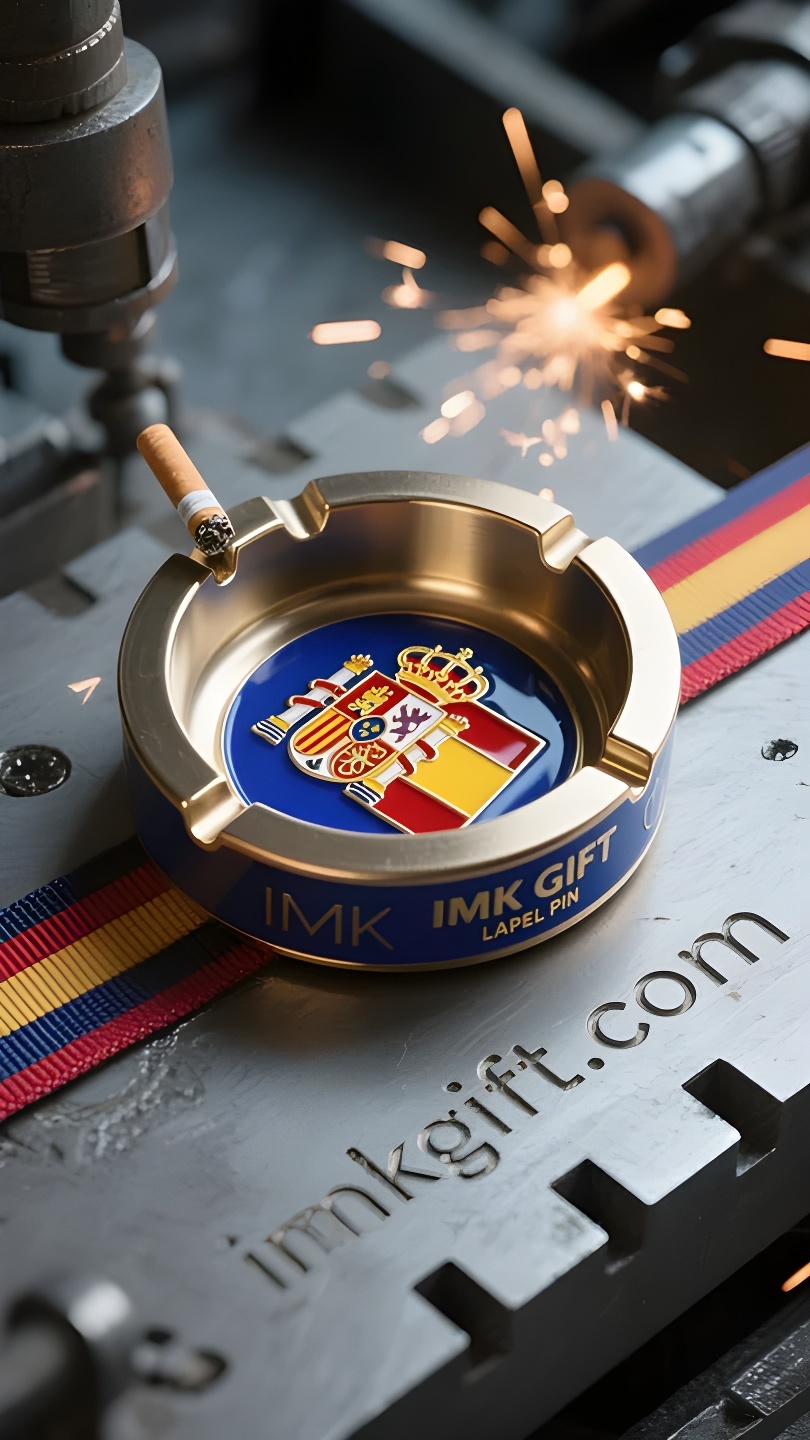in994-Por-encima-de-las-cenizas-El-sol-que-nunca-se-pone
▼
En octubre, las cintas rojas y amarillas de la bandera nacional de España ondearon como el mar durante las celebraciones del Día de la Hispanidad. El castillo, el león y la granada del emblema nacional reflejan la herencia histórica de tolerancia y diversidad del país. En el resplandor de la celebración, un cenicero grabado con el emblema nacional interpreta silenciosamente una filosofía de supervivencia más profunda. Los ceniceros siempre van acompañados de cenizas tras su combustión, al igual que la historia moderna de guerra y renacimiento de España. El humo de la pólvora cuando Granada cayó en 1492 y el sangriento atardecer durante la guerra civil se convirtieron en cenizas y cayeron en el contenedor del tiempo. Pero la silueta redonda del cenicero del emblema nacional es como un corazón de tolerancia que nunca se cierra: acepta las brasas de la historia, pero da paso a una nueva vida. Cuando las colillas se apagan en el relieve heráldico, los restos grises se convierten en tierra fértil para nutrir el futuro. Esta nación lo entiende: la gloria de la época dorada de la navegación eventualmente se enfriará y se convertirá en una pieza de museo. El dolor del franquismo también se asentará en la piedra angular de la reflexión. Como un cenicero siempre a la espera de nuevas chispas, los españoles han convertido la historia en nutrientes, y al ritmo del flamenco y en la aguja de la inacabada Sagrada Familia de Gaudí, siguen brotando la creatividad del renacimiento de las cenizas. Las cenizas no son el fin, sino el preludio de una nueva vida. Al contemplar este contenedor de fragmentos de tiempo, podemos comprender la metáfora más tenaz de la supervivencia de una nación: la verdadera gloria siempre crece en la tolerancia y la trascendencia del pasado.
In October, Spain’s red and yellow ribbons of the national flag surged like the sea during the Columbus Day celebrations. The castle, lion and pomegranate on the national emblem tell the country’s historical gene of tolerance and diversity. In the afterglow of the celebration, an ashtray engraved with the national emblem is silently interpreting a deeper philosophy of survival. Ashtrays are always accompanied by ashes after burning, just like Spain’s modern history of war and rebirth. The gunpowder smoke when Granada fell in 1492 and the bloody sunset during the civil war all turned into ashes and fell into the container of time. But the round outline of the national emblem ashtray is like a heart of tolerance that never closes – it accepts the embers of history, but makes room for new life. When the cigarette butts are extinguished on the heraldic relief, the gray wreckage becomes fertile soil to nourish the future. This nation understands: the glory of the golden age of navigation will eventually cool down and become a museum exhibit; the pain of the Franco era will also settle into the cornerstone of reflection. Just like an ashtray always waiting for new sparks, the Spanish have turned history into nutrients, and in the rhythm of flamenco and on the spire of Gaudi’s unfinished Sagrada Familia, they continue to burst out with creativity of rebirth from the ashes. Ashes are not the end, but the prelude to a new life. When we gaze at this container of fragments of time, we can understand the most tenacious metaphor of a nation’s survival: true glory always grows in tolerance and transcendence of the past.
十月的西班牙,国旗的红黄绶带在哥伦布日庆典中翻涌如海。国徽上纹章交错的城堡、雄狮与石榴,诉说着这个国家包容多元的历史基因。而在庆典的余韵中,一枚刻着国徽的烟灰缸,正以沉默的姿态诠释着更深邃的生存哲学。
烟灰缸总与燃烧后的灰烬相伴,正如西班牙历经战火与重生的近代史。1492年格拉纳达陷落时的硝烟、内战时期的血色残阳,都化作灰烬落进时间的容器。但国徽烟灰缸的圆形轮廓,恰似永不闭合的包容之心——它承接历史余烬,却为新生腾出空间。当烟蒂在纹章浮雕上熄灭,灰白的残骸反而成为滋养未来的沃土。
这个民族懂得:辉煌如黄金时代的航海荣光,终会冷却为博物馆的展品;痛苦如佛朗哥时代的阴霾,亦会沉淀为反思的基石。就像烟灰缸永远等待新的星火,西班牙人将历史化作养分,在弗拉门戈的顿挫节奏里、在高迪未完工的圣家堂尖顶上,持续迸发着浴火重生的创造力。
灰烬不是终点,而是新生的序章。当我们凝视这枚盛载时光碎片的容器,便能读懂一个民族最坚韧的生存隐喻:真正的荣耀,永远生长于对过去的包容与超越之中。
▼
Contact Us
📞 Tel: +0086-760-85286839
📧 Email: sales3@imkgift.com








